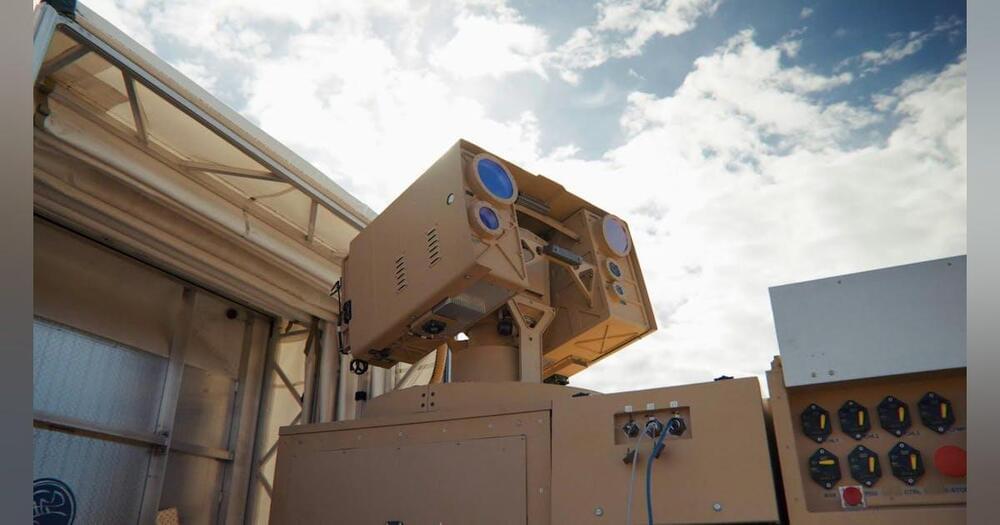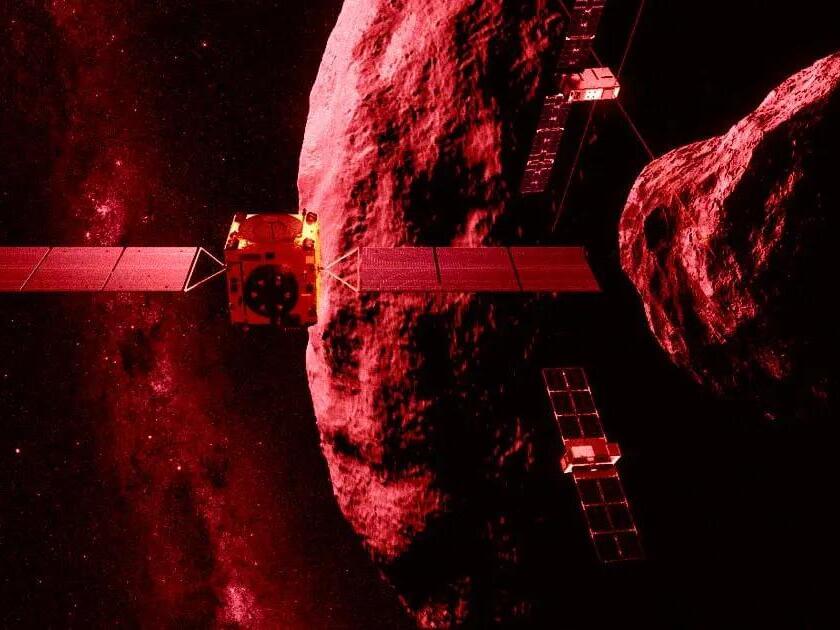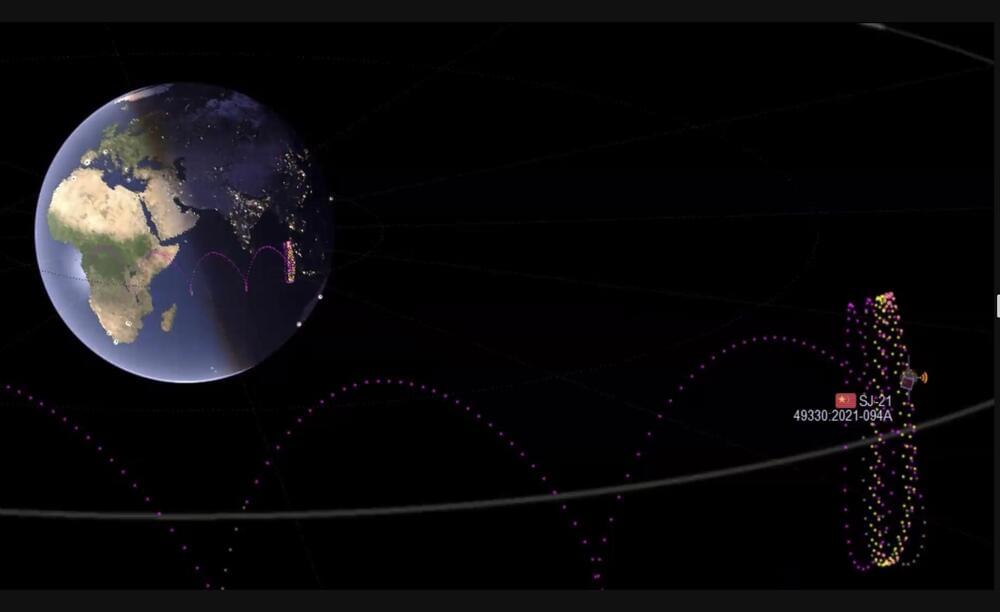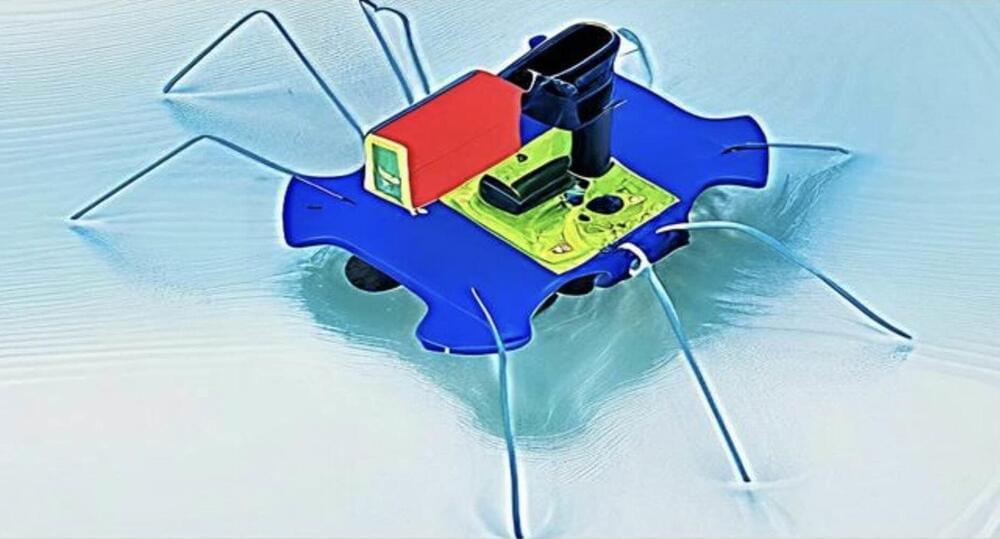Researchers can mass-produce these cyborg cockroaches for disaster relief, surveillance, and environmental monitoring.
Researchers from Singapore have developed a new machine to automatically turn cockroaches into cyborgs in 68 seconds flat.
Researchers can mass-produce these cyborg cockroaches for disaster relief, surveillance, and environmental monitoring.
Researchers from Singapore have developed a new machine to automatically turn cockroaches into cyborgs in 68 seconds flat.

A team of Rice University scientists has solved a long-standing problem in thermal imaging, making it possible to capture clear images of objects through hot windows. Imaging applications in a range of fields—such as security, surveillance, industrial research and diagnostics—could benefit from the research findings, which were reported in the journal Communications Engineering.
“Say you want to use thermal imaging to monitor chemical reactions in a high-temperature reactor chamber,” said Gururaj Naik, an associate professor of electrical and computer engineering at Rice and corresponding author on the study. “The problem you’d be facing is that the thermal radiation emitted by the window itself overwhelms the camera, obscuring the view of objects on the other side.”
A possible solution could involve coating the window in a material that suppresses thermal light emission toward the camera, but this would also render the window opaque. To get around this issue, the researchers developed a coating that relies on an engineered asymmetry to filter out the thermal noise of a hot window, doubling the contrast of thermal imaging compared to conventional methods.
Critics doubt that Emotiv’s earphone-style sensors can reliably track things like stress and attention—and some worry the technology will become yet another form of workplace surveillance.

Perhaps no technology has shaped the 21st-century battlefield as profoundly as the drone. These uncrewed aerial vehicles (UAVs), along with their land and sea counterparts, have redefined the way wars are fought by providing military forces with unprecedented capabilities in surveillance, precision targeting, and intelligence gathering — all while reducing the risk to their own personnel. Drones have made complex operations more efficient and less costly, enabling militaries to strike with pinpoint accuracy and maintain a persistent presence over the battlefield.
As the century progresses, the influence of drones continues to expand beyond traditional state actors. Non-state groups and non-peer adversaries increasingly have adopted this technology, leveraging it to level the playing field in conflicts around the world. With commercial drones becoming more accessible, these actors can conduct reconnaissance, drop bombs, and challenge conventional military forces in ways that previously were unimaginable.
The influence of drones flows across all domains of warfare. Loitering munitions, or “Kamikaze drones,” have disrupted traditional force structures by providing smaller, more agile units with the ability to strike high-value targets such as tanks, artillery, and command centers.

If it were up to Larry Ellison, the exorbitantly rich cofounder of software outfit Oracle, all of us will soon be smiling for the camera — constantly. Not for a cheery photograph, but to appease our super-invasive, if not totally omnipresent, algorithmic overseers.
As Business Insider reports, the tech centibillionaire glibly predicts that the wonders of AI will bring about a new paradigm of supercharged surveillance, guaranteeing that the proles — excuse us, “citizens” — all behave and stay in line.
“We’re going to have supervision,” Ellison said this week at an Oracle financial analysts meeting, per BI. “Every police officer is going to be supervised at all times, and if there’s a problem, AI will report that problem and report it to the appropriate person.”
Those that have nothing to hide have nothing to fear. From an episode of the early outer limits OBIT.
Use code isaacarthur at the link below to get an exclusive 60% off an annual Incogni plan: https://incogni.com/isaacarthur.
Technology brings us many wonders, but it may also bring about the end of our privacy. What, if anything, can we do to protect it?
Join this channel to get access to perks:
/ @isaacarthursfia.
Visit our Website: http://www.isaacarthur.net.
Join Nebula: https://go.nebula.tv/isaacarthur.
Support us on Patreon: / isaacarthur.
Support us on Subscribestar: https://www.subscribestar.com/isaac-a…
Facebook Group: / 1583992725237264
Reddit: / isaacarthur.
Twitter: / isaac_a_arthur on Twitter and RT our future content.
SFIA Discord Server: / discord.
Credits:
Is Privacy Going Extinct?
Episode 466; September 26, 2024
Written, Produced \& Narrated by: Isaac Arthur.
Editors: Merv Johnson II
Select imagery/video supplied by Getty Images.
Music Courtesy of Epidemic Sound http://epidemicsound.com/creator

The European Space Agency (ESA) just launched its much-anticipated effort to explore the wreckage of the asteroid Dimorphos, the cosmic body that NASA successfully obliterated last year during its pioneering planetary defense test in 2022. The “crash scene” surveillance team includes the spacecraft Hera as well as two tiny cubesats,…

HELSINKI — Chinese researchers are calling for improved space situational awareness, following an assessment of U.S. capabilities and trends.
An article titled “A Review of Space Situational Awareness Satellites: Silentbarker,” published in the journal ACMSR, provides an in-depth review of the development, status and future trends of space situational awareness (SSA) satellites.
It focuses in particular on four significant programs developed by the United States. These are the Midcourse Space Experiment (MSX), the Space-Based Surveillance System (SBSS), the Geosynchronous Space Situational Awareness Program (GSSAP) and Silentbarker.

A recently adopted United Nations treaty could lead to invasive digital surveillance, human rights experts warn.
NEW YORK CITY —The United Nations approved its first international cybercrime treaty yesterday. The effort succeeded despite opposition from tech companies and human rights groups, who warn that the agreement will permit countries to expand invasive electronic surveillance in the name of criminal investigations. Experts from these organizations say that the treaty undermines the global human rights of freedom of speech and expression because it contains clauses that countries could interpret to internationally prosecute any perceived crime that takes place on a computer system.

A new robot bug that can live in the ocean for 100 years and feed off of bacteria has made its debut as DARPA’s latest surveillance tool.
With a vast amount of area to cover, the US government is funding research for new oceanic spy technology. Now, a Binghamton University team has developed what may become one of the most simple and effective tools in its arsenal.
Now, a new DARPA initiative is playing off of the idea of “the Internet of Things,” the term used for the many non-computer devices connected to the Internet in some way, from refrigerators to fish tanks, and seeking to develop an “Ocean of Things.” With many futurists’ eyes on space conflict and satellite warfare, it’s easy to forget that 71% of the Earth’s surface is water, and naval conflict is still an element in geopolitics.